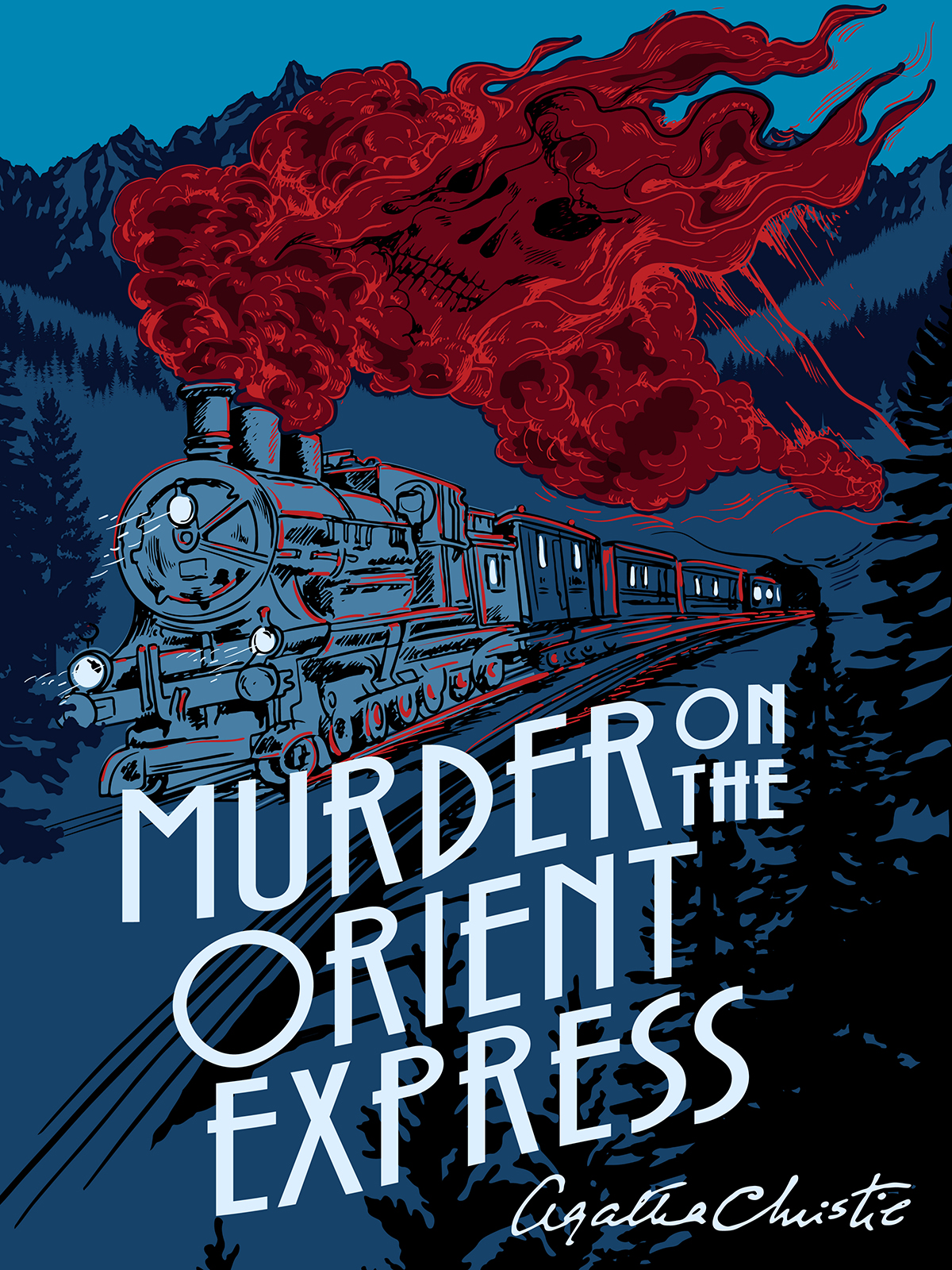Murder on the Orient Express: A Deep Dive into Agatha Christie's Masterpiece

Agatha Christie’s Murder on the Orient Express remains a cornerstone of mystery literature, captivating readers for nearly a century with its intricate plot, memorable characters, and shocking twist ending. This enduring popularity has translated into numerous adaptations for stage, screen, and other media, cementing its place in popular culture. This in-depth exploration delves into the various facets of Murder on the Orient Express, examining its literary merit, cultural impact, and enduring appeal across various platforms.
The Book: A Classic Mystery Novel

Murder on the Orient Express, published in 1934, is the tenth novel in Agatha Christie’s Hercule Poirot series. It falls squarely within the genre of classic mystery, often referred to as the “Golden Age of Detective Fiction.” This era, spanning roughly from the 1920s to the 1950s, was characterized by intricate plots, clever clues, and a focus on intellectual deduction rather than graphic violence. Christie’s masterful storytelling exemplifies these characteristics.
The novel’s plot unfolds on the prestigious Orient Express, a luxury train traversing Europe. When a blizzard halts the train’s progress, a wealthy American passenger, Samuel Edward Ratchett, is found murdered in his locked compartment. Hercule Poirot, the renowned Belgian detective, is a passenger on the same train and is immediately drawn into the investigation. The confined setting and the diverse group of suspects—each with a potential motive—create a compelling puzzle.
Christie’s writing style is known for its precision and clarity. She masterfully introduces the characters, creating a cast of memorable individuals with distinct personalities and backstories. The narrative unfolds through a series of interviews with the passengers, each recounting their version of events, revealing fragments of the truth while concealing crucial details. This method builds suspense and keeps the reader guessing until the climactic revelation.

Genre and Classification
Murder on the Orient Express is primarily categorized as a mystery novel, specifically a whodunit. The emphasis is on solving the crime through observation, deduction, and unraveling the intricate web of lies and deceit surrounding the suspects. The book’s classic setting and style also allow it to be classified as a Golden Age mystery. Beyond these primary classifications, aspects of the novel could also be considered suspense, thriller, or even a crime novel, depending on the interpretive lens.
Educational Value and Life Lessons
While primarily a work of fiction, Murder on the Orient Express offers subtle educational value and life lessons. The narrative presents a nuanced exploration of morality and justice. The reader is challenged to consider the complex interplay between personal desires, societal norms, and the legal ramifications of actions. The ethical implications of the resolution raise questions about vengeance versus justice, pushing readers to consider the gray areas of morality.

Furthermore, the book subtly highlights the power of observation and deduction as essential tools for problem-solving. Poirot’s methodical approach to the investigation illustrates the importance of careful analysis and attention to detail. This emphasis on critical thinking skills translates beyond the confines of the novel, making it a thought-provoking read for a wider audience.
Agatha Christie: The Author and Her Influence
Agatha Christie (1890-1976) remains one of the most widely read and translated authors of all time. Her prolific career spanned decades, during which she wrote numerous novels and short stories, establishing her as the undisputed “Queen of Crime.” Her works are celebrated for their clever plots, memorable characters, and ability to keep readers on the edge of their seats.
Christie’s Writing Style
Christie’s writing style is characterized by its simplicity and directness. She prioritized clear prose and efficient storytelling, focusing on plot development and character interaction over intricate descriptions or stylistic flourishes. This approach made her work accessible to a broad readership, while still maintaining the complexity and intellectual stimulation characteristic of the mystery genre. Her dialogue is realistic and reveals character through subtle nuances in speech and tone.
Inspirations and Famous Works
Christie’s works drew inspiration from various sources, including her personal experiences, current events, and the social landscape of her time. Murder on the Orient Express is particularly interesting in its use of real-life events as inspiration, drawing from the Lindbergh kidnapping and reflecting the social tensions of the 1930s. Other famous works include And Then There Were None, Death on the Nile, and The Murder of Roger Ackroyd, each showcasing her ability to craft intricate mysteries with shocking twists.
Reading Habits and Summaries
The accessibility of Christie’s writing and the engaging nature of her plots contribute to her popularity among readers of various ages and backgrounds. Murder on the Orient Express is a relatively quick read, ideal for those seeking a captivating mystery without a large time commitment.
Plot Summary and Key Themes
The novel begins with Hercule Poirot boarding the Orient Express, where he is soon embroiled in a murder investigation. The victim, Ratchett, is found stabbed multiple times in his locked compartment. The snowstorm ensures that the murderer is among the passengers. Poirot uses his exceptional deductive skills to interrogate each suspect, revealing their past connections to Ratchett and uncovering a web of secrets and lies.
The central theme is justice, or rather, the lack thereof within the legal system. Poirot uncovers a compelling motive for the murder: Ratchett was a man who escaped justice for a terrible crime. The passengers on the train, each with a connection to Ratchett’s past crime, orchestrate the murder as an act of revenge. This central theme raises compelling questions about morality and the boundaries of justice, inviting the reader to contemplate the meaning of retribution and its moral consequences.
Cultural Impact and Adaptations
Murder on the Orient Express’s enduring appeal has led to numerous adaptations across various media, solidifying its place in popular culture. The novel’s compelling plot and memorable characters have been reimagined for stage, film, television, and even video games. These adaptations, often altering elements of the original story, have broadened the book’s reach and introduced it to new generations of audiences.
Literary Influence and Awards
Murder on the Orient Express has had a significant influence on subsequent mystery writers, influencing narrative techniques and character archetypes within the genre. Its intricate plotting and clever solution have served as a benchmark for subsequent whodunits. While it may not have won specific prestigious literary awards in the traditional sense, its impact on the genre and its enduring popularity are testaments to its literary significance.
Adaptations and Awards
The novel has been adapted into several successful films, including the renowned 1974 version starring an all-star cast and a more recent 2017 adaptation. These film adaptations have received critical acclaim and commercial success, further enhancing the book’s cultural footprint. While the film adaptations may have garnered awards themselves, the book’s influence on cinema, through its repeated adaptation, is a crucial aspect of its legacy.
Communities and Fan Culture
The enduring appeal of Murder on the Orient Express has fostered vibrant communities of fans who engage with the book through discussions, online forums, and literary societies. The story’s accessibility and thought-provoking themes stimulate ongoing engagement and intellectual debate, contributing to its continued relevance.
In conclusion, Murder on the Orient Express stands as a testament to Agatha Christie’s masterful storytelling, influencing the mystery genre and captivating audiences for generations. Its intricate plot, memorable characters, and thought-provoking themes continue to resonate with readers, making it a timeless classic that deserves its place within the canon of world literature and pop culture.